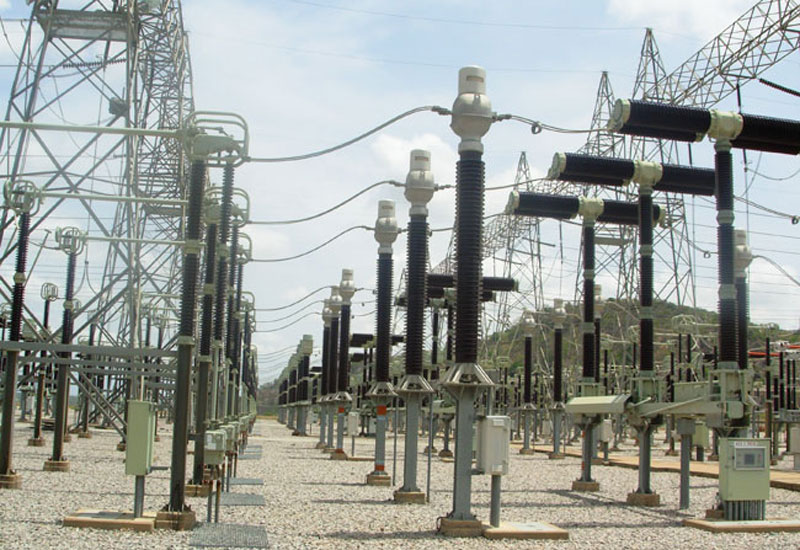How low can it go — and how long will it last? The 50 percent slump in oil prices raises both those questions and while nobody can confidently answer the first question (I will try to in a moment), the second is pretty easy.
Low oil prices will last long enough for one of two events to happen. The first possibility, the one most traders and analysts seem to expect, is that Saudi Arabia will re-establish OPEC’s monopoly power once it achieves the true geopolitical or economic objectives that spurred it to trigger the slump. The second possibility, one I wrote about two weeks ago, is that the global oil market will move toward normal competitive conditions in which prices are set by the marginal production costs, rather than Saudi or OPEC monopoly power. This may seem like a far-fetched scenario, but it is more or less how the oil market worked for two decades from 1986 to 2004.
Whichever outcome finally puts a floor under prices, we can be confident that the process will take a long time to unfold. It is inconceivable that just a few months of falling prices will be enough time for the Saudis to either break the Iranian-Russian axis or reverse the growth of shale oil production in the United States. It is equally inconceivable that the oil market could quickly transition from OPEC domination to a normal competitive one. The many bullish oil investors who still expect prices to rebound quickly to their pre-slump trading range are likely to be disappointed. The best that oil bulls can hope for is that a new, and substantially lower, trading range may be established as the multi-year battles over Middle East dominance and oil-market share play out.
The key question is whether the present price of around $55 will prove closer to the floor or the ceiling of this new range. The history of inflation-adjusted oil prices, deflated by the U.S. Consumer Price Index, offers some intriguing hints. The 40 years since OPEC first flexed its muscles in 1974 can be divided into three distinct periods. From 1974 to 1985, West Texas Intermediate, the U.S. benchmark, fluctuated between $48 and $120 in today’s money. From 1986 to 2004, the price ranged from $21 to $48 (apart from two brief aberrations during the 1998 Russian crisis and the 1991 war in Iraq). And from 2005 until this year, oil has again traded in its 1974 to 1985 range of roughly $50 to $120, apart from two very brief spikes in the 2008-09 financial crisis.
Advertisement
What makes these three periods significant is that the trading range of the past 10 years was very similar to the 1974-85 first decade of OPEC domination, but the 19 years from 1986 to 2004 represented a totally different regime. It seems plausible that the difference between these two regimes can be explained by the breakdown of OPEC power in 1985 and the shift from monopolistic to competitive pricing for the next 20 years, followed by the restoration of monopoly pricing in 2005 as OPEC took advantage of surging Chinese demand.
In view of this history, the demarcation line between the monopolistic and competitive regimes at a little below $50 a barrel seems a reasonable estimate of where one boundary of the new long-term trading range might end up. But will $50 be a floor or a ceiling for the oil price in the years ahead?
There are several reasons to expect a new trading range as low as $20 to $50, as in the period from 1986 to 2004. Technological and environmental pressures are reducing long-term oil demand and threatening to turn much of the high-cost oil outside the Middle East into a “stranded asset” similar to the earth’s vast unwanted coal reserves. Additional pressures for low oil prices in the long term include the possible lifting of sanctions on Iran and Russia and the ending of civil wars in Iraq and Libya, which between them would release additional oil reserves bigger than Saudi Arabia’s on to the world markets.
Advertisement
The U.S. shale revolution is perhaps the strongest argument for a return to competitive pricing instead of the OPEC-dominated monopoly regimes of 1974-85 and 2005-14. Although shale oil is relatively costly, production can be turned on and off much more easily – and cheaply – than from conventional oilfields. This means that shale prospectors should now be the “swing producers” in global oil markets instead of the Saudis. In a truly competitive market, the Saudis and other low-cost producers would always be pumping at maximum output, while shale shuts off when demand is weak and ramps up when demand is strong. This competitive logic suggests that marginal costs of U.S. shale oil, generally estimated at $40 to $50, should in the future be a ceiling for global oil prices, not a floor.
On the other hand, there are also good arguments for OPEC-monopoly pricing of $50 to $120 to be re-established once markets test the bottom of this range. OPEC members have a strong interest in preventing a return to competitive pricing and could learn to function again as an effective cartel. Although price-fixing becomes more difficult as U.S. producers increase market share, OPEC could try to impose pricing “discipline” if it can knock out many U.S. shale producers next year. The macro-economic impact of low oil prices on global growth could help this effort by boosting economic activity and energy demand.
So which of these arguments will prove right: The bearish case for a $20 to $50 trading-range based on competitive market pricing? Or the bullish one for $50 to $120 based on resumed OPEC dominance?
Ask me again once the price of oil has fallen to $50 – and stayed there for a year or so.
Advertisement
*Kaletsky, author of “Capitalism 4.0”, is an award-winning journalist and financial economist. He wrote this article for Reuters
5 comments







We have not learn as a nation to save for rainy days.
And neither have we learnt to diversify our economies or we are too lazy as a nation to do that.
The Naira Value, Tipping Point and Voodoo Economics
It is becoming apparent by the day that these are not the best of times for the managers of Africa’s largest economy. Otherwise, why would 1 USD exchange for about N180 because crude all price ‘fell’ to 74 USD?
If you take a look at the link below and point the cursor on the graph, you will be able to follow the trajectory of crude oil price over a long period of time.
http://www.eia.gov/dnav/pet/hist/LeafHandler.ashx?n=PET&s=INI1500008&f=M
Some pertinent questions:
1.Why was the Naira much stronger in 1993 for instance when Nigeria Crude Oil was selling for 18.26 USD and the production was only 1.8m bpd ?(http://www.indexmundi.com/energy.aspxcountry=ng&product=oil&graph=production)
2. Why did Naira not appreciate in value when crude oil price doubled in recent years?
3. Why is it that the currencies of other oil producing countries, including oil producing countries in Africa, South America and other developing countries of the world are not depreciating against the dollar with the fall in crude oil prices?
4. Why are the managers of the economy never bothered about the many factories in the country that are folding up and many more that would fold up with the arbitrary devaluation of the Naira?
5. Why is it that Nigeria is the only major oil producing country in the world that imports refined petroleum products whereas countries like South Africa and Turkey that have no crude oil are self-sufficient in petroleum products and Nigeria is not? Nigeria at a time was importing petroleum products from South Africa !
6. Why is it that our refineries with combined capacity of over 400,000bpd can barely operate at 10% capacity
7. Why is it that we claim to pay Trillions of Naira on subsidy when the so-called subsidy is based on a warped and unrealistic exchange rate of dollar to Naira?. In 1989 the exchange rate was N7.39 to the dollar and in 1993 the “downward journey of no return” started when the Naira was devalued arbitrarily to 22.05? Is it not curious that hardly any Nigerian gets kerosene to buy at the subsidized price of N50?
The arbitrary and continued devaluation of the Naira is one of the most wicked and destructive policies that could be brought to bear on hapless Nigerians. It is an evil that would continue to subjugate Nigerian workers. Generations yet unborn would continue to slave and wallow in abject poverty, as long as the nation’s Economic Manager continue to devalue the Naira.
Consider the fact that the minimum wage is N18,000 (approx 90 USD ) per month, while the minimum wage was USD 7.25 per hour as far back as 2009 in the US.
Many more factories will close down in the days ahead as the cost of raw materials will go up and manufactured goods would remain highly uncompetitive. Nigeria will again be flooded with sub-standard and non-essential imported goods (including tooth picks, handkerchiefs, candles, socks!). These are only some of the collateral damaging effects of the unjustifiable devaluation of the Naira.
While the Federal Government has embarked on a laudable Housing Policy by allocating substantial amount of money to the Housing Remortgaging Finance Scheme, the two major plywood companies in the country – AT & P and Epe Ply for instance are no longer in operation , Where would doors, wardrobes, plywood formwork for construction come from? Continued importation and exportation of jobs to other countries of course!
If Naira was exchanging for 9.91: $1 in 1992 when crude oil was selling for $17.59, it is certainly illogical that the same Naira should exchange for 180 : $1 now that crude oil is selling for $65 or more.
There are too many jobless youth roaming the streets. The old saying emphasized that devil is the idle hands’ workshop. We are indeed at the tipping point and it is high time our policy makers reviewed the most unnecessary and unjustifiable devaluation of the Naira, given the facts that were discussed above.
The is the reality brought to light,i think there is a conspiracy by the elite against the generality of Nigerians,the importation will not cease because they have interest in the what is being imported.
Jonathanian regime